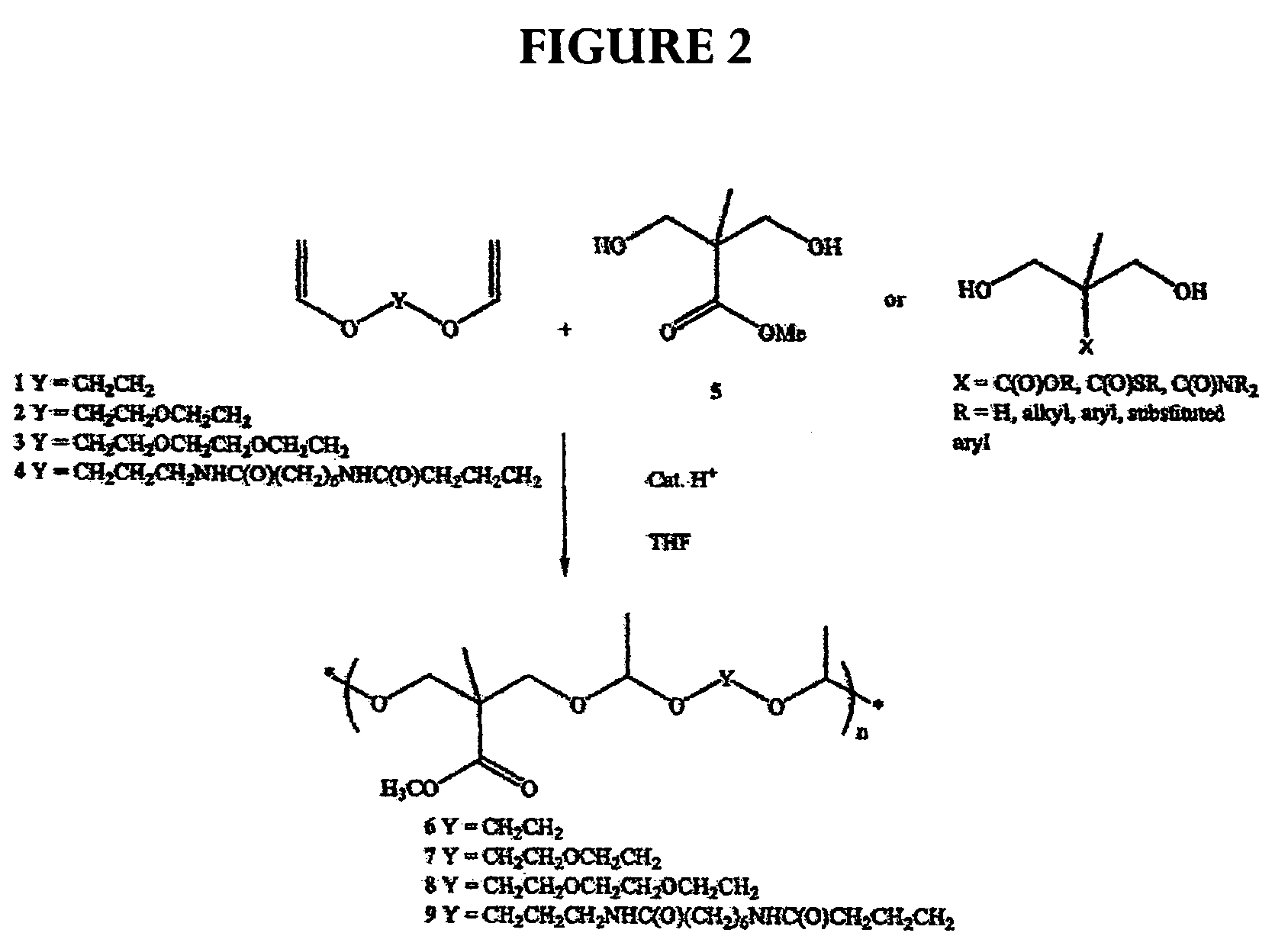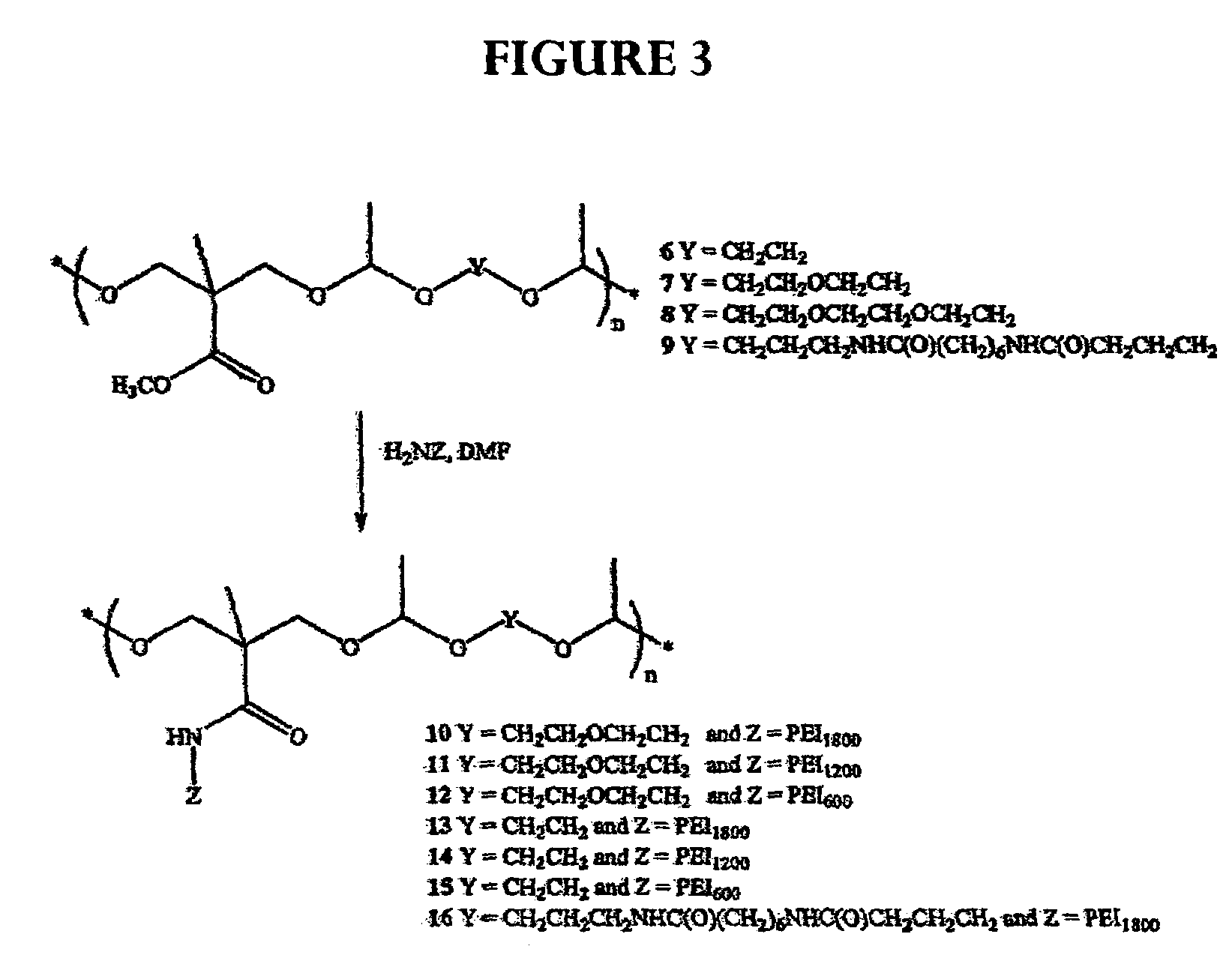Microscope system and methods for intracellular studies
a microscopy and intracellular technology, applied in the field of in vitro polynucleotide delivery applications, can solve the problems of limited visualization technology of dynamic behavior of complexes inside cells, inability to study the dynamic behavior of living cells, and high system cost, and achieve high resolution
- Summary
- Abstract
- Description
- Claims
- Application Information
AI Technical Summary
Benefits of technology
Problems solved by technology
Method used
Image
Examples
examples
[0063]Gene carriers were synthesized according to the procedure in U.S. application Ser. No. 10 / 375,075, filed Feb. 25, 2003, which is incorporated herein by reference and described below, or purchased from Polysciences, Inc. FITC-Fluorescence-5-X and Rhodamine Red were purchased from Molecular Probes. The conjugation of fluorescent dye to gene carriers was performed by the literature's procedure (Godbey, et al. PNAS 96, 5177-5181 (1999)).
[0064]A Zeiss axiovert S100 microscope and a Quantix Q-57 backthinned, cooled CCD camera were used. The Rhodamine was imaged with a Chromatechnologies 41002 filter set. The FITC-Fluorescence-5-X and the GFP were imaged with Achroma technologies 41028 filter set optimized for Yellow Fluorescent Proteins (YFP) but suitable for said excitation and emission. A 40× oil immersion, NA 1.4, objective and either a 1.6× or 2.0× optivar additional magnification were used.
[0065]Cell lines and cultures used in the following examples were prepared as follows: Ka...
examples 1-4
[0067]The following description for the synthesis of polyacetal is illustrative: Di(ethylene glycol) divinyl ether (1.39 g, 8.76 mmol) and bis-(2-hydroxymethyl)methyl propionate (1.30 g, 8.76 mmol) were mixed in tetrahydrofuran (THF) (10 mL) with molecular sieves (1.0 g) at room temperature and stirred for 20 min. A catalytic amount of toluensulfonic acid monohydrate (TSA, 0.015 g, 0.08 mmol) was added and stirring was continued for four days. The reaction mixture was quenched with sodium bicarbonate (1 mL, 5% in water) or triethylamine (1 mL). Water (10 mL) was added and the organic phase was extracted with ethylacetate (3×10 mL). The extracts were combined, dried with sodium sulfate, filtered, and concentrated by rotary evaporation. The residue was dried under high vacuum to give polyacetal (2.65 g, 8.65 mmol, 98%) as an oil.
examples 5-11
[0068]The following description for the synthesis of polyacetal is illustrative: To poly(ethylenimine) (PEI1800) (30 g, 16.7 mmol) was added a solution of polyacetal (0.5 g, 1.63 mmol) in dimethylformamide (DMF) (10 mL). Additional DMF (10 mL) was added and the mixture was stirred for four days. THF (100 mL) was added to form a precipitate. The precipitate was filtered and washed with THF, then dried under high vacuum to give polyacetal (2.2 g).
PUM
| Property | Measurement | Unit |
|---|---|---|
| pH | aaaaa | aaaaa |
| pH | aaaaa | aaaaa |
| molecular weights | aaaaa | aaaaa |
Abstract
Description
Claims
Application Information
 Login to View More
Login to View More - R&D
- Intellectual Property
- Life Sciences
- Materials
- Tech Scout
- Unparalleled Data Quality
- Higher Quality Content
- 60% Fewer Hallucinations
Browse by: Latest US Patents, China's latest patents, Technical Efficacy Thesaurus, Application Domain, Technology Topic, Popular Technical Reports.
© 2025 PatSnap. All rights reserved.Legal|Privacy policy|Modern Slavery Act Transparency Statement|Sitemap|About US| Contact US: help@patsnap.com



